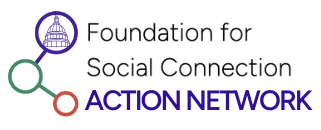As a first generation college student of color from a low-income background that attended a predominantly white institution (PWI), I often felt as though I didn’t fit in on campus.
First Generation (first-gen) college students are undergraduates whose parents did not complete a bachelor’s degree. Today, they make up about half of the students on college campuses across the country. Often, first gen students also come from low socioeconomic backgrounds and as a result can experience various unique social isolation challenges throughout their collegiate journey.
About a week after I confirmed my decision to attend my undergraduate institution, I started to feel anxious. Reality sunk in that the school I just committed to was a PWI where less than 6% of the undergraduate population were students of color. Immediately, several concerns came to my mind: Will I make friends? How will I be perceived? Will I be able to make connections with anyone?
A few weeks after committing to my institution, I was thankful when I received a letter stating that I had the opportunity to participate in 4-week bridge program for traditionally underrepresented students like myself, in order to help us get acclimated to campus, connect with other incoming students, and take college courses before the semester officially began. During the bridge program, I created bonds with students from similar backgrounds that allowed me to feel a sense of belonging and these relationships made all the difference during my college experience, especially during moments that I felt invisible and judged by peers who didn’t share my identities.
Despite having the bridge program to tackle some of the anxieties I felt, I still had moments that made me question whether I belonged on my campus. In particular, I recall one instance during my freshman year where I noticed how vastly different my economic background was from the many students I took classes with. Spring break was approaching and I remember overhearing conversations my peers had about their vacation plans. These plans included trips overseas and relaxing at their families’ vacation home. As a low-income student, the idea of traveling for break was foreign and never an option for me. Instead, I spent my breaks on campus and focused on working as many hours as I could to ensure I had the funds to support myself. Overhearing the differences in plans for such a short break made me feel that I didn’t belong and reminded me of the stark differences in opportunities and resources between myself and the campus community.
Across the United States, 66% of first-gen students enrolled in college are employed and work a median of 20 hours. For students balancing their studies, being social, and family responsibilities, this can prove to be taxing, stressful and isolating as it was for me.
Unfortunately, there were many other moments where I felt isolated and disconnected from the campus community. However, I was able to make it through such moments due to the social connection fostered through the bridge program where I gained friends, a broader community of support, and resources. The bridge program and its resources were invaluable to me and I know without it, the adjustment to my institution would have been much tougher.
My first gen identity along with my other identities brought along additional feelings of isolation to my campus experience. Since being an undergraduate student, there have been some improvements in building community on campus for first gen students such as 73% of institutions offering cohort-based programs for first gen students. However, there are still many opportunities for advancement in representation for students with underrepresented identities on campus. For example, between 2013-2020 only 7% of US four-year institutions have made improvements in racial, ethnic, and socioeconomic representation among students on campus. It is my hope that all institutions will understand that social isolation for first generation and underrepresented college students is not an issue that should fall solely on students to solve, but must be addressed with new initiatives and programs and should be prioritized by campus leadership. It is essential for all institutions to offer bridge programs and sustainable connection opportunities for traditionally underrepresented students as well as staff and faculty who share those identities and serve as advocates for incoming students to provide them with a sense of belonging and increase their connectedness to the campus community. Such initiatives are important for the success of these students.
Citations:
https://firstgen.naspa.org/files/dmfile/FactSheet-04.pdf
https://datausa.io/profile/university/university-of-rochester
https://firstgen.naspa.org/files/dmfile/FactSheet-04.pdf
https://www.nsea.info/first-generation-project

